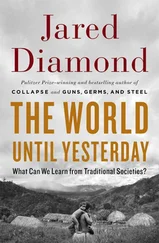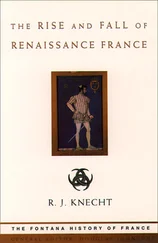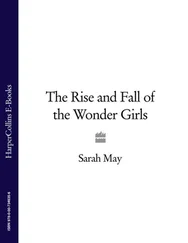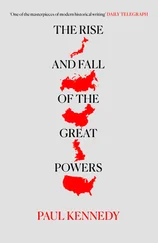Jared Diamond - The rise and fall of the third chimpanzee
Здесь есть возможность читать онлайн «Jared Diamond - The rise and fall of the third chimpanzee» весь текст электронной книги совершенно бесплатно (целиком полную версию без сокращений). В некоторых случаях можно слушать аудио, скачать через торрент в формате fb2 и присутствует краткое содержание. Год выпуска: 1991, ISBN: 1991, Издательство: RADIUS, Жанр: Биология, на английском языке. Описание произведения, (предисловие) а так же отзывы посетителей доступны на портале библиотеки ЛибКат.
- Название:The rise and fall of the third chimpanzee
- Автор:
- Издательство:RADIUS
- Жанр:
- Год:1991
- ISBN:0-09-174268-4
- Рейтинг книги:4 / 5. Голосов: 1
-
Избранное:Добавить в избранное
- Отзывы:
-
Ваша оценка:
- 80
- 1
- 2
- 3
- 4
- 5
The rise and fall of the third chimpanzee: краткое содержание, описание и аннотация
Предлагаем к чтению аннотацию, описание, краткое содержание или предисловие (зависит от того, что написал сам автор книги «The rise and fall of the third chimpanzee»). Если вы не нашли необходимую информацию о книге — напишите в комментариях, мы постараемся отыскать её.
The rise and fall of the third chimpanzee — читать онлайн бесплатно полную книгу (весь текст) целиком
Ниже представлен текст книги, разбитый по страницам. Система сохранения места последней прочитанной страницы, позволяет с удобством читать онлайн бесплатно книгу «The rise and fall of the third chimpanzee», без необходимости каждый раз заново искать на чём Вы остановились. Поставьте закладку, и сможете в любой момент перейти на страницу, на которой закончили чтение.
Интервал:
Закладка:
In short, cultural and biological change had to develop hand-in-hand to permit our long lives.
Along with the changes in our sexual anatomy, physiology, behaviour, and preferences discussed in Chapters Three to Six, retarded aging is the last of the life-cycle changes that made possible the third chimpanzee's rise.
The way in which scientists think about aging depends on whether they are interested in so-called proximate explanations or ultimate explanations. To appreciate this difference, consider the question, 'Why do skunks smell bad? A chemist or molecular biologist would answer,
'It's because skunks secrete chemical compounds with certain particular molecular structures. Due to the principles of quantum mechanics, those structures result in bad smells. Those particular chemicals would smell bad no matter what the biological function of their bad smell was.
But an evolutionary biologist would instead reason,
'It's because skunks would be easy victims for predators if they didn't defend themselves with bad smells. Natural selection made skunks evolve to secrete bad-smelling chemicals; those skunks with the worst smells survived to produce the most baby skunks. The molecular structure of those chemicals is a mere incidental detail; any other bad-smelling chemicals would suit skunks equally well.
The chemist has offered a proximate explanation: that is, the mechanism immediately responsible for the observation that was to be explained. The evolutionary biologist has instead offered an ultimate explanation: the function or chain of events that caused that mechanism to be present. The chemist and the evolutionary biologist would each dismiss the other's answer as not being 'the real explanation'.
Similarly, studies of aging are pursued independently by two groups of scientists who scarcely communicate with each other. One group seeks a proximate explanation, the other an ultimate explanation. Evolutionary biologists try to understand how natural selection could ever permit aging to occur, and they think that they have found an answer to this question. Physiologists inquire instead into the cellular mechanisms underlying aging, and admit that they do not yet have an answer. But I shall argue that aging cannot be understood unless we seek both explanations simultaneously. In particular, I expect that the evolutionary (ultimate) explanation will help us find the physiological (proximate) explanation of aging that has so far eluded scientists. Before I can pursue this reasoning, I must anticipate objections of my physiologist friends. They tend to believe that something about our physiology somehow makes aging inevitable, and that evolutionary considerations are irrelevant. For instance, one such theory attributes aging to the progressive difficulties that our immune system is said to face in distinguishing our own cells from foreign cells. Physiologists subscribing to this view make an implicit assumption that natural selection could not lead to an immune system without that fatal defect. Is this belief warranted? -
To evaluate this objection, let's consider biological repair mechanisms, because aging may be thought of simply as unrepaired damage or deterioration. Our first association with the word 'repair' is likely to be to those repairs that cause us the most frustration, car repairs. Our cars tend to grow old and die, but we spend money to postpone their inevitable fate. Similarly, we are unconsciously but constantly repairing ourselves too, at every level from that of molecules to that of tissues or whole organs. Our own self-repair mechanisms, like those we lavish on our cars, are of two sorts—damage control, and regular replacement.
An automotive example of damage control is that we replace a car's bumper only if it is bashed in; we do not routinely replace the bumper at every regular oil change. The most visible example of damage control applied to our bodies is wound healing, by which we repair damage to our skin. Many animals can achieve more spectacular results: lizards regenerate severed tails, starfish and crabs their limbs, sea cucumbers their intestines, and ribbon worms their poison stylets. At the invisible molecular level our genetic material, DNA, is repaired exclusively by damage control. We have enzymes that recognize and fix damaged sites in the DNA helix while ignoring intact DNA.
The other type of repair, regular replacement, is also familiar to every car-owner. We periodically change the oil, air filter, and ball-bearings to eliminate slight wear, without waiting for the car to break down first. In the biological world, teeth are similarly replaced on a pre-scheduled basis: humans go through two sets, elephants six sets, and sharks an indefinite number, during their lifetimes. Though we humans go through life with the same skeleton with which we were born, lobsters and other arthropods regularly replace their exoskeleton by moulting it and growing a new one. Still another highly visible example of scheduled repair is the continual growth of our hair: no matter how short we cut it, its growth will replace the cut portion.
Regular replacement also goes on at a microscopic or submicroscopic level. We constantly replace many of our cells about once every few days for the cells lining our intestine, once every two months for the cells lining the urinary bladder, and once every four months for our red blood cells. At the molecular level, our protein molecules are subject to continuous turnover at a rate characteristic of each particular protein; we thereby avoid the accumulation of damaged molecules. If you compare your beloved's appearance today with a photograph taken a month ago, he (or she) may look the same, but many of the individual molecules forming that beloved body are different. While all the king's horses and men couldn't put Humpty Dumpty together again, Nature is taking us apart and putting us back together every day. Thus, much of an animal's body can be repaired as needed, or is regularly replaced anyhow, but the details of how much is replaceable vary greatly with the part and with the species. There is nothing physiologically inevitable about the limited repair capabilities of us humans. Since starfish can regrow amputated limbs, why can't we? What prevents us from having six sequential sets of teeth like an elephant, rather than just baby teeth and adult teeth? With four more natural sets, we would not need fillings, crowns, and dentures as we got older. Why don't we protect ourselves against arthritis? — all we would need is to replace our joints periodically, as crabs do. Why don't we guard against heart disease by periodically replacing our hearts, as ribbon worms replace their poison stylets? One might suppose that natural selection would favour the man or woman who did not die of heart disease around the age of eighty but continued to live and produce babies at least until the age of 200. Why, for that matter, cannot we repair or replace everything in our bodies?
The answer surely has something to do with the expense of repair. Here again, the analogy of car repair is helpful. If the boasts of the Mercedes-Benz company are to be believed, their cars are so well built that, even should you do no maintenance whatsoever—not even lubrication or oil changes—your Mercedes will still run for years. At the end of that time, of course, it will fall apart from accumulated irreversible damage. So Mercedes-owners generally do choose to service their cars regularly. My Mercedes-owning friends tell me that Mercedes service is very expensive, hundreds of dollars every time they drive into the workshop. Nevertheless, they consider the expense worth it. A serviced Mercedes lasts much longer than an unserviced Mercedes, and it is much cheaper to service your old Mercedes regularly than to discard it and buy a new one every few years.
That is how Mercedes-owners reason in Germany and the US. But suppose you were living in Port Moresby, the capital of Papua New Guinea, automobile accident capital of the world, where any car is likely to be written off within a year no matter how you maintain it. Many car-owners in New Guinea do not go to the expense of maintaining their car; they use the saved money to help buy the inevitable next car.
Читать дальшеИнтервал:
Закладка:
Похожие книги на «The rise and fall of the third chimpanzee»
Представляем Вашему вниманию похожие книги на «The rise and fall of the third chimpanzee» списком для выбора. Мы отобрали схожую по названию и смыслу литературу в надежде предоставить читателям больше вариантов отыскать новые, интересные, ещё непрочитанные произведения.
Обсуждение, отзывы о книге «The rise and fall of the third chimpanzee» и просто собственные мнения читателей. Оставьте ваши комментарии, напишите, что Вы думаете о произведении, его смысле или главных героях. Укажите что конкретно понравилось, а что нет, и почему Вы так считаете.












